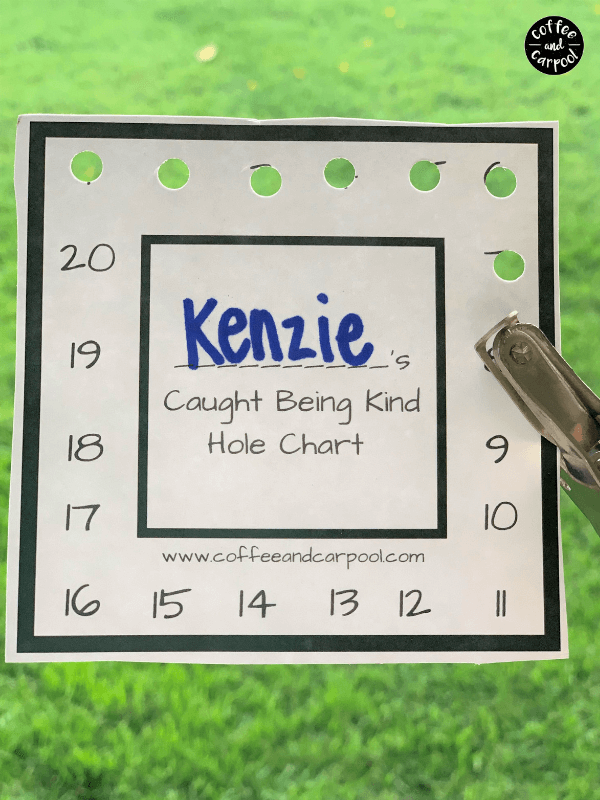Inside: Teach kids how to be kind more often with this trash or kindness game that lets them decide if social interactions are unkind, rude or kind.
I visited my daughter’s school to volunteer and had some extra time to watch my kids play on the yard afterward.
Observing a playground watching kids play always gives invaluable insight into the school’s culture and the value they place on speaking or acting with kindness.
At my daughter’s school, there were kids who sat by themselves. Kids who were eating at a table by themselves. And kids who stood off to the side and watched other kids play.
No one walked over to them. No one invited them to join in. No one sat with them.
Schools that hang up kindness posters like these or host Kindness Week aren’t always the kind schools. Those might be there as great reminders, but often they’re there as “show” so the administration can check it off their list.
The truly kind schools are the ones where the entire staff from teachers to aides to custodians talk about kindness often, have conversations with kids about how their actions are hurtful or mean-spirited, and praise and elevate kindness when they see it to reinforce the positive behaviors. All the time.
It can’t be a one and done conversation. We can’t have one kindness assembly and be done. We can’t just read one book on kindness and call it a day.
If we want kids to hear us, really hear us, and start to change how they interact with their peers and siblings, we have to be relentlessly consistent: kindness is essential to the overall culture of our schools, our home, and our communities.
“I run a Kindness Club at my school and I played it with my 50 3rd-5th grade students yesterday afternoon. I loved the problem-solving component, in which they needed to read each scenario and align it with the proper heading or put it in the trash. Awesome game!” -Wendy S.
And this Trash or Kindness Game is another tool educators and parents can use to keep the conversation about kindness continually happening and to make social and emotional curriculum part of every day.

What is Kindness?
One of the hardest parts of teaching kids to be kind is to be able to explain to them what kindness really is.
We all know…vagulely.
But how do we explain it to kids?
And we have to be specific about how we want them to speak and act if we’re trying to change their behavior and change their habits.
Some of us get kindness and niceness confused. But we don’t want nice kids. We want kind kids.
So what is kindness?
Kindness is a verb. It’s something you do. It’s something you say.
People who are kind do it because they can, out of the goodness of their hearts.
Kind people want to be kind because they have compassion and empathy for others and genuinely want to help someone who needs it.
Kindness is:
- showing empathy
- showing compassion
- being friendly
- being a good friend
- being helpful
- being polite
- sharing
- turn taking
- standing up for others
- including others
- being thoughtful
- being mindful of people around you
So for our kids, we need to give them examples.
We need to give them social scenarios so they can discern what is unkind and what is kind.
Related: Kind or Unkind Sort
And that’s why this Trash or Kindness Game is perfect to help children really understand kindness.
How Can We Teach Kindness?
Some kids are intrinsically more kind than others. It’s part of their personalities.
For the other kids, we can teach them how to be kind more often. Kindness is a learned behavior.
But we have to be intentional about it.
We can read books about kindness, about celebrating our differences, about including others and about bullying prevention.
We can praise kindness when we see it with these Caught Being Kind Cards or these Kindness Hole Charts.

We can teach our kids how to be includers and how to stand up for a friend or classmate to prevent bullying behaviors from escalating.
And we can hang those kindness posters as long as we don’t just hang them up and ignore them.
Related: Why Kindness Week DOESN’T Work and what to do Instead
We can encourage kids to be kind every day with our 100 Days of Kindness School Activity and with these Classroom Kindness Tips.

And we can also talk about kindness often so they know we value it.
We can use these 60 Kindness Discussion Starters or this Compassion Walk in Their Shoes Game or this Skittles Kindness Activity.
Or we can use this new Trash or Kindness Game.
Who can use this Trash or Kindness Game?
Scouts: This game was originally designed for a group of Girl Scouts who were really struggling to be kind to each other. There was a lot of mean girl behaviors and they needed something more than gentle reminders. There is a Girl Scout version of this game that has The Girl Scout Law tenants as each of the Kindness Cards. If you are a Girl Scout leader, you can get our Girl Scout resources for kindness here.
Classrooms: As teachers spend more and more time realizing how essential social and emotional curriculum is, we’ve designed this version with teachers in mind. To use this Trash or Kindness Game in the most beneficial way, it’s best to talk about kindness often rather than as a one time lesson or as a stand-alone “kindness week” (which aren’t as effective). Teachers can go over a few Action Cards a day during Morning Meeting time or if you have a few minutes before recess or lunch as a great reminder of how to behave when they’re with their peers in a more unstructured setting.
Homes: Kindness starts at home. How we talk about kindness at home is crucial for setting our kids up for success. So families can use this Trash or Kindness Game at home when they’re having conversations about kindness and can be used during a family meeting or instead of game night or movie night.
Want more Kindness Games to Teach Social Emotional Learning? You’ll love these!
How to Play the Trash or Kindness Game
1. Download and print out the Kind or Trash Game. (You can download it below.)

2. Cut apart the Kindness Cards and the Action Cards.
3. Layout the Kindness Cards on the table or in the center of your circle. If you’re in a classroom, you can tape them up to your whiteboard or pin them to a bulletin board.
These cards showcase different kinds of kindness:
- honest
- friendly
- considerate and polite
- caring and empathetic
- helpful
- respectful of others
- fair
- mindful of others
- make the world a better place
- advocate for yourself and others
4. Prep a trashcan that can hold the “trashy” unkind scenarios on the Action Cards. We purchased a clean, small trash can at a dollar store. You could also use a box or any container and tape a “trash” card to it.

5. Go through each Action Card and decide together whether it’s kind or trash.
Watch the Tik Tok reel here on how to play the game.
If it’s unkind, mean-spirited, unfriendly, or rude put it in the trashcan.
Call it “trash.” If you’re working with younger kids, you can make a big deal about putting in the trash, saying “yuk,” or making a face to emphasize the nastiness of the Action Card.

6. If the Action Card demonstrates kindness, sort them by the type of kindness (there is often more than one answer, and there are no wrong answers.)

7. Talk about some of the trickier situations. One of the Action Cards says “saying ‘no.'” We want our kids to know they can say “no” and still be kind. They don’t have to do things they don’t want to do or feel unsafe. They don’t have to be a doormat or get pushed around. So saying “no” can be a kind.
Use these to get into deeper conversations about treating people the way you want to be treated and standing up for yourself and your friends and being mad without being mean or retaliating.

8. Use the blank cards to write down situations your kids encounter or experience at school, on a team, in an afterschool activity, or in their neighborhood so they’re relevant and connect to their everyday interactions with their peers.
9. As social situations arise where students make kind or unkind choices, connect back to this activity, and remind them about your conversations.
We know that excluding people is unkind. Next time, to show how kind you are, please allow everyone to play kickball who wants to.
We decided that whispering is unkind because people think you’re talking about them. If it’s a private conversation then you need to wait until you’re alone to talk about it.
We know that returning a lost item to someone is kind. Thank you so much for doing that for her because I’m sure she really wants her water bottle. You’re a kind kid.
Related: How to respond when kids forget and are unkind to others
Keep having the conversations about kindness and expectations of treating others with kindness.
Continually remind, praise, and reinforce that we treat people the way we want to be treated.
Because if we want this message to sink in and if we want kindness to become a habit for our kids, we have to be relentlessly consistent in our message: We are kind. You are kind. We speak and act with kindness.
And we leave the trash where it belongs… in the trash can.

Download the School Version of Trash or Kindness here.
Download the Home Version of Trash or Kindness here.
Download the Girl Scout Version of Trash or Kindness here.











Holly says
I signed up to receive the activity, but it still hasn’t been emailed to me.
Latestmodapks says
This is a great game to help kids understand kindness.
latestModapks says
I love this game! It’s so easy to play, and it really helps to understand kindness.